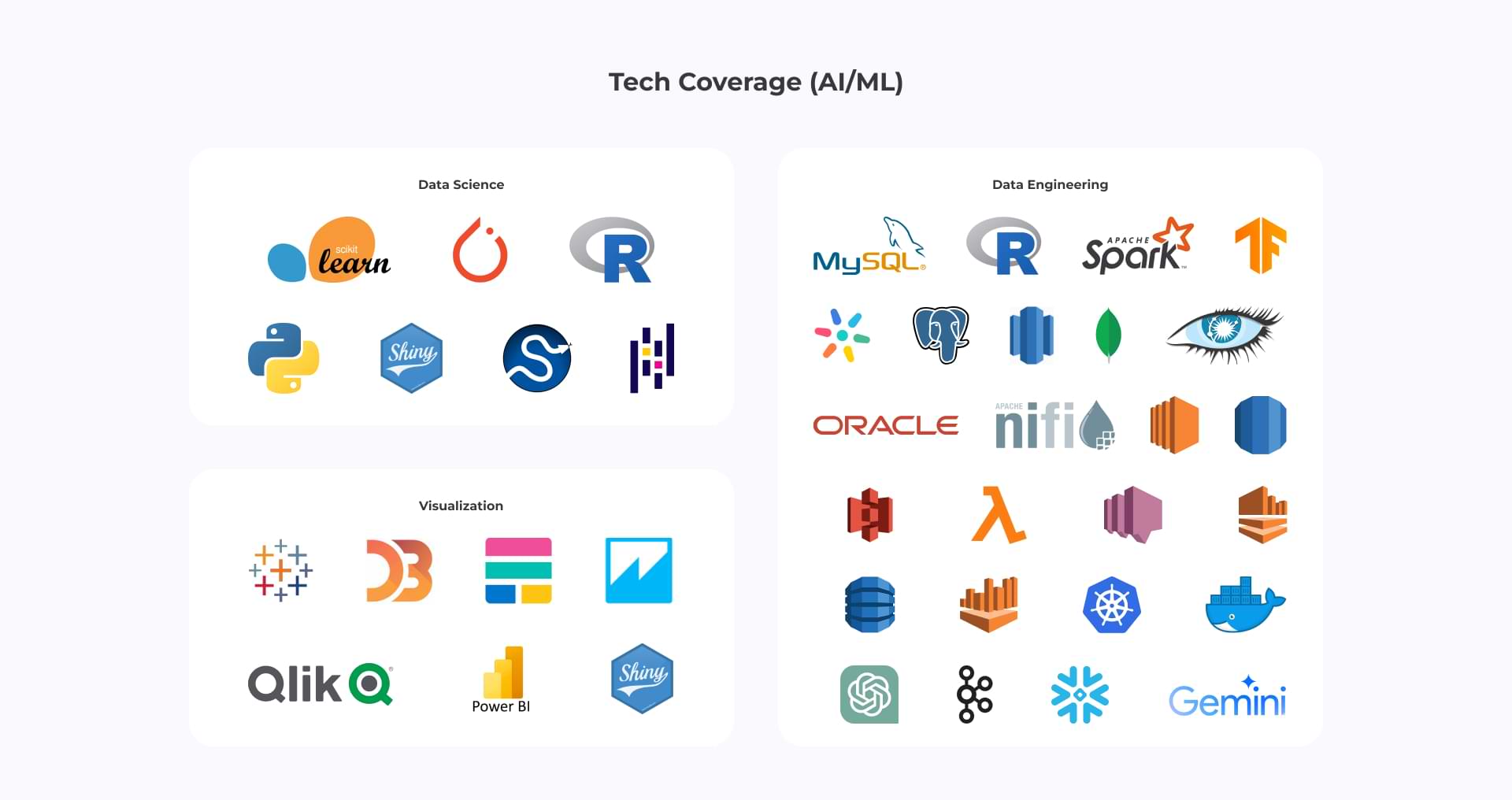The Rise of the Software Workforce: How Data Science Powers Software Robotics
Imagine a tireless digital workforce that automates tedious tasks, eliminates human error, and operates 24/7. This isn’t science fiction; it’s the reality of software robotics, a powerful automation technique powered by data science. Let’s explore how data science breathes life into software robots and revolutionizes the way we work.
Let’s connect
Book a meeting
Software Robotics: The Digital Mimic
Software robots, also known as Robotic Process Automation (RPA) tools, are essentially software programs that mimic human actions on a computer. They can automate repetitive tasks involving data entry, copying and pasting information, manipulating files, and interacting with various applications. This frees up human employees from mundane tasks, allowing them to focus on higher-value activities requiring creativity and critical thinking.
Data Science: The Secret Sauce
While RPA tools can automate basic tasks, data science elevates them to a whole new level. Data science techniques like machine learning and artificial intelligence (AI) empower software robots to become more intelligent and adaptable. Here’s how:
Enhanced Data Handling:
Software robots often interact with vast amounts of data in various formats. Data science helps them extract, clean, and structure this data efficiently. Techniques like natural language processing (NLP) enable robots to understand unstructured data such as text documents and emails, improving accuracy and efficiency.
Intelligent Decision Making:
Basic RPA tools follow pre-programmed instructions. Data science injects intelligence by training machine learning models on historical data. This allows software robots to “learn” from past actions and make informed decisions in real time. Imagine a robot processing loan applications that can analyze financial data and make preliminary decisions based on learned patterns.
Exception Handling:
Inevitably, situations arise that fall outside the robot’s pre-programmed routines. Data science can equip robots to handle these exceptions effectively. By analyzing past error logs and identifying patterns, robots can learn to recognize anomalies and take appropriate actions. This reduces the need for human intervention and keeps automation running smoothly.
Continuous Improvement:
Data science facilitates the continuous improvement of software robots. By analyzing performance data, data scientists can identify bottlenecks and optimize robot workflows. Additionally, machine learning models can be continuously updated with new data, allowing robots to adapt and improve their performance over time.
Benefits of Data-Driven Software Robotics
The integration of data science with software robotics offers a multitude of benefits:
Increased Efficiency: Automating repetitive tasks frees up human employees, leading to significant productivity gains.
Improved Accuracy: Data science helps eliminate human error in data entry and manipulation tasks, ensuring high levels of accuracy.
Improved Scalability: Adapting to fluctuating business requirements is seamless with the effortless scalability of software robots.
Reduced Costs: Automation can significantly reduce labour costs associated with repetitive tasks.
Enhanced Adherence: Software robots play a crucial role in maintaining consistent compliance with rules and regulations, thereby minimizing risks associated with non-compliance.
Real-World Applications
Data-driven software robotics is transforming various industries:
Finance: Streamlining loan processing, automating account management, and enhancing fraud detection.
Healthcare: Automating medical record processing, scheduling appointments, and generating reports.
Manufacturing: Managing inventory levels, optimizing production processes, and performing quality control checks.
Customer Service: Answering frequently asked questions, processing customer requests, and providing 24/7 support.
The Future of Software Robotics with Data Science
The future of software robotics is intertwined with advancements in data science. As data science techniques become more sophisticated, we can expect even smarter software robots:
Cognitive Automation: Robots will be able to understand complex processes, analyze large amounts of data, and make strategic decisions, mimicking human cognitive abilities.
Cross-Platform Automation: Robots will seamlessly interact with various software applications and platforms, automating tasks across different systems.
Hyperautomation: A combination of RPA with other automation technologies powered by AI will create a hyper-automated environment, significantly reducing the need for human intervention in many processes.
The Human-Robot Collaboration
While software robotics promises significant benefits, it’s important to remember that robots are not meant to replace humans entirely. The future of work lies in human-robot collaboration, where robots handle repetitive tasks and humans leverage their creativity, problem-solving skills, and social intelligence for higher-order tasks.
In conclusion, data science is the fuel that propels software robotics forward. By leveraging data science techniques, software robots are evolving from basic automation tools to intelligent digital colleagues. As this field continues to grow, we can expect software robots to play an increasingly significant role in shaping the future of work across various sectors.
Global success stories
Here are some related content that highlight our capability in delivering AI solutions that save costs as well as boost productivity.
Manufacturing 4.0:



